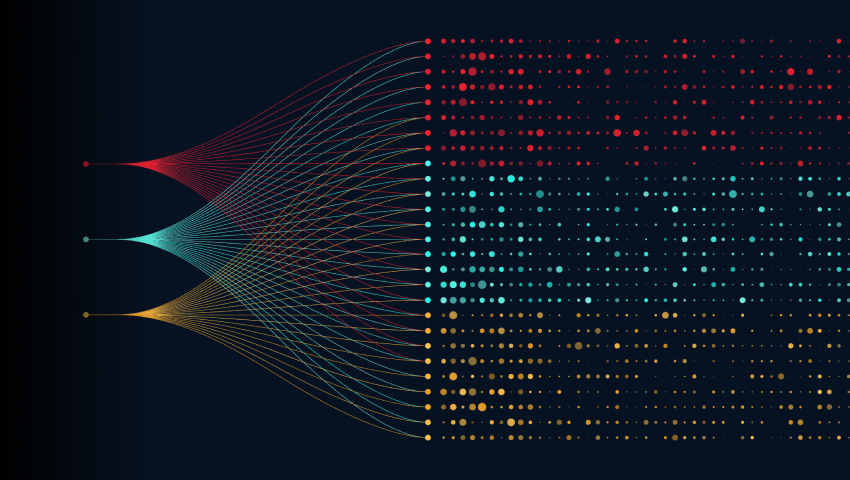For many manufacturers, predictive maintenance programs are a top priority when it comes to improving the efficiency, reliability, and safety of equipment and personnel across facilities. Georgia-Pacific (GP) has emerged as a leader in the process monitoring and predictive maintenance space in part due to the creation of its Collaboration and Support Center (CSC) in 2018.
By bringing together GP’s expertise in data, AI, process control, software development, and cloud technology, the CSC drives GP’s successful asset health program, ensuring that more than 100 manufacturing facilities run efficiently, reliably, and safely.
“The goal of the CSC was to bring in knowledge from different functional areas such as process control, engineering, data science, and automation under one roof to support our operations” says Sam Coyne, Director of AI at GP. “What we deliver at the CSC is a digital offering that improves output and overall equipment effectiveness, and our ultimate goal is to reduce downtime.”
Choosing a Partner
The CSC implemented a highly successful program for monitoring individual tag-based sensor readings or in some cases, simpler assets, using univariate analytical or statistical models. However, as the CSC scaled up its program to monitor more complex assets (e.g., pumps, boilers, turbines), it required a solution that could meet additional modeling and data integration demands.
GP chose to embark on a multi-year partnership with C3 AI because C3 AI’s solution allows the CSC to monitor assets at a more holistic level, utilize large amount of data from disparate sources, and deploy advanced ML techniques to improve monitoring of all assets.
Starting with C3 AI Reliability, the application not only improved overall monitoring performance of assets used in the manufacturing processes but also significantly enhanced the workflows, productivity, and collaboration of CSC asset engineers and data scientists.
“Georgia-Pacific was after a platform that could help them wrangle, correlate, and normalize disparate data coming from an increasingly large fleet of sensors that were used across their paper mills in North America and other relational and enterprise data, sitting across different systems and silos,” says Alex Amato, Vice President, Customer Services at C3 AI.
Easy Access to Unified, Federated Data
With C3 AI solutions, data scientists spend less time performing repetitive, data wrangling tasks. Moreover, these solutions remove the complexities of correlating disparate data coming from a wide array of sources, permitting data scientists to build complex, data-rich models and focus on what matters most: building and improving machine learning models that prevent unplanned downtime.
As a data scientist at the CSC, Jun Hua develops and maintains the models that monitor the asset health of equipment across facilities. Like most data scientists, the first step in Jun’s model development process is to understand what data is available and how he can retrieve it. To accomplish this, Jun previously relied heavily on data engineers to help access and understand the vast array of data available to him. Once Jun has received the data, he performed an onerous process of transforming data into a suitable format for model prototyping. These lengthy development tasks cut into data science productivity and had to be repeated for each new model Jun created.
The C3 AI Platform allows data scientists to skip the tedious task of data preparation with its model-driven architecture, whereby disparate data sources are mapped to a common object model that is abstracted for re-use and scalability. Not only is Jun now relieved of the data collection and preparation effort, but he also has more data available at his fingertips, allowing him to build highly sophisticated models that consider multiple data sources including vibration, process, work order, and equipment information to provide a holistic view of an asset.
“One thing that really set C3 AI apart from other vendors in the AI and data science ecosystem is the ability to bring together a lot of different data sources into one platform that we can then all work from,” says Hua.
Real-Time Feedback and Improved Collaboration
Now that Jun has the data he needs, he’s ready to start prototyping models. To develop high performing and accurate models, Jun turns to the domain expertise of the engineers. However, without a shared platform and language, Jun must spend more effort creating additional materials to support his findings and explanations.
With C3 AI Reliability, data scientists and engineers can collaborate within the same platform, from the same source of truth, and go through investigative and validation workflows together. For instance, Jun can deploy a new or work-in-progress model to detect anomalous behavior of a critical asset directly into the C3 AI Reliability application in a “Candidate” model state for subject matter expert review. Pat, an engineer familiar with the application workflows, can jump directly into the model review and problem-solving process with Jun. SMEs are also able to digest and validate the model outputs in a format they understand, which ultimately leads to better model results and faster time-to-value.
Moreover, the application’s end-to-end workflows allow asset engineers to provide real-time feedback on model performance without interrupting the model alert triage process. This feedback is stored and contextualized for each model, making it easy for Jun to understand which models need attention and what corrective action needs to be taken. To garner real-time model feedback, Jun and Pat no longer need to set up lengthy meetings or exchange multiple emails. From the start, Jun and Pat are working hand-in-hand to develop, review, deploy, and improve highly sophisticated asset-level machine learning models.
Furthermore, with self-service features to deploy prototypes into production, CSC data scientists are less reliant on IT teams to transition from prototyping to production. Previously, once models were validated by the asset engineer teams, Jun would then need support from additional IT teams to promote and deploy his models into production. Now, with self-service features built directly in the application, Jun can directly deploy validated models into production. With more self-sufficiency, Jun can deliver insights to engineers and facilities faster and more easily.
“The Platform brings together data engineering, it brings together data science, it brings our partners who are, in the end, using our tool that can give real-time feedback,” says Hua. “That really sets us apart and our partnership with C3 AI apart.”
Looking Ahead
Today, leveraging the unparalleled scalability of C3 AI solutions, GP has rolled out C3 AI Reliability to monitor over 200 assets across facilities and plans to expand C3 AI Reliability to monitor additional critical asset classes in the next 12 months.
The C3 AI Reliability deployment is just the start for GP in leveraging C3 AI solutions across the enterprise. GP and C3 AI continue to identify and scope additional AI use cases, while delivering scalable, cutting-edge Enterprise AI applications across GP.
Learn more about the Georgia-Pacific Success Story here.
About the Author
Garrett McGovern is a Delivery Manager at C3 AI where he works with customer stakeholders to drive the successful delivery of C3 AI products. Prior to C3 AI, Garrett was a Consultant for IBM’s Analytics and AI practice in their NYC office. He holds a Bachelor of Science in Information Systems from Indiana University – Bloomington.



